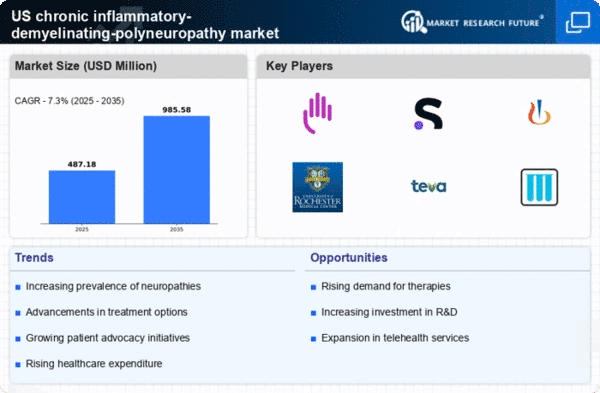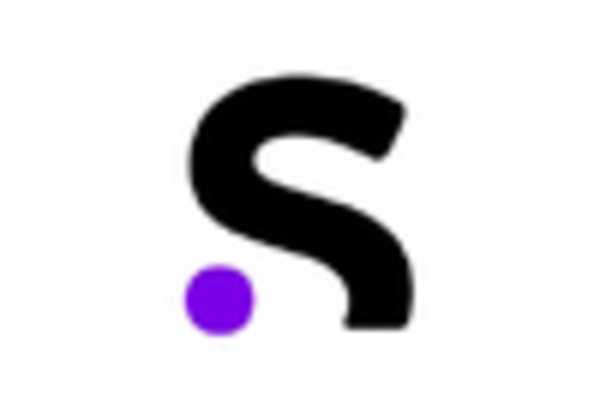Increased Research Funding
The chronic inflammatory-demyelinating-polyneuropathy market is benefiting from increased research funding aimed at understanding and treating this complex condition. Government and private organizations are allocating substantial resources to research initiatives, which may lead to the development of novel therapies and treatment protocols. In recent years, funding for neurological research has seen a notable rise, with millions of dollars being invested in studies focused on chronic inflammatory-demyelinating polyneuropathy. This influx of funding is likely to accelerate the pace of clinical trials and the introduction of innovative treatment options. As research progresses, it may also enhance the understanding of the underlying mechanisms of the disease, potentially leading to more effective management strategies.
Advancements in Diagnostic Technologies
Technological advancements in diagnostic tools are significantly impacting the chronic inflammatory-demyelinating-polyneuropathy market. Enhanced imaging techniques and biomarker identification have improved the accuracy of diagnoses, allowing for earlier intervention. For instance, the use of MRI and nerve conduction studies has become more prevalent, facilitating timely identification of chronic inflammatory-demyelinating polyneuropathy. This early diagnosis is crucial, as it can lead to better patient outcomes and more effective treatment plans. As diagnostic technologies continue to evolve, they are likely to increase the number of patients identified and treated, thereby driving market growth. The integration of artificial intelligence in diagnostics may further streamline processes, enhancing the overall efficiency of the healthcare system.
Growing Awareness and Education Initiatives
Awareness and education initiatives regarding chronic inflammatory-demyelinating polyneuropathy are gaining traction, positively influencing the market. Various organizations and healthcare providers are actively working to educate both patients and clinicians about the disease, its symptoms, and available treatment options. This increased awareness is likely to lead to earlier diagnosis and treatment, which could improve patient outcomes. Furthermore, educational campaigns may empower patients to seek medical advice sooner, thereby increasing the patient population within the chronic inflammatory-demyelinating-polyneuropathy market. As more individuals become informed about the condition, the demand for effective therapies is expected to rise, further driving market growth.
Emergence of Patient-Centric Treatment Approaches
The chronic inflammatory-demyelinating-polyneuropathy market is witnessing a shift towards patient-centric treatment approaches. This trend emphasizes the importance of tailoring therapies to individual patient needs, which may enhance treatment efficacy and patient satisfaction. As healthcare providers increasingly recognize the value of personalized care, there is a growing focus on understanding patient preferences and experiences. This shift is likely to lead to the development of more targeted therapies and management strategies that align with patient expectations. Additionally, patient-centric approaches may foster greater engagement in treatment plans, potentially improving adherence and outcomes. As the market evolves, this focus on patient-centered care could play a pivotal role in shaping future therapeutic developments.
Rising Incidence of Chronic Inflammatory-Demyelinating Polyneuropathy
The chronic inflammatory-demyelinating-polyneuropathy market is experiencing growth due to the increasing incidence of this neurological disorder in the US. Recent estimates suggest that the prevalence of chronic inflammatory-demyelinating polyneuropathy may be around 3-7 cases per 100,000 individuals. This rising incidence is likely to drive demand for effective treatment options, thereby expanding the market. As more patients are diagnosed, healthcare providers are compelled to seek innovative therapies and management strategies. The growing awareness among healthcare professionals regarding the symptoms and diagnosis of chronic inflammatory-demyelinating polyneuropathy further contributes to this trend. Consequently, the market is poised for expansion as the healthcare system adapts to meet the needs of an increasing patient population.

















Leave a Comment